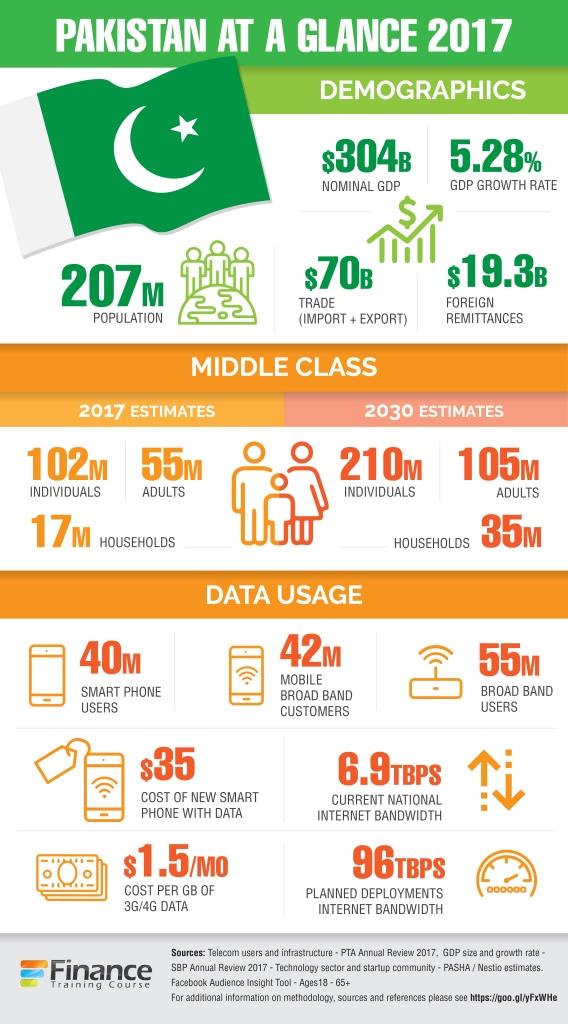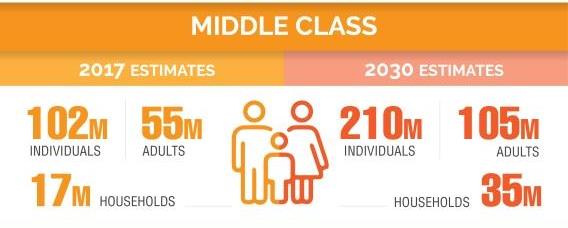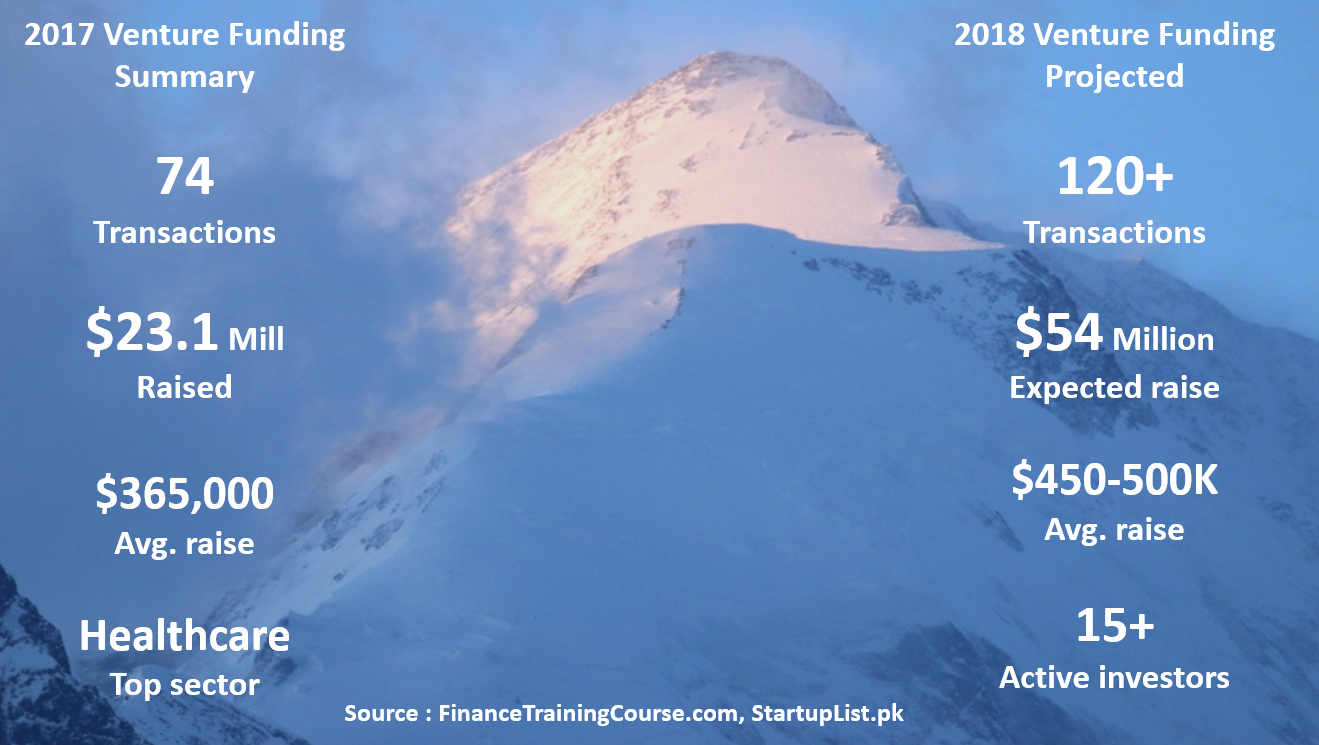The revised and updated Pakistan country profile and info-graphic is here. Originally published in October post the tech sector 021-Disrupt event, the series attempted to track common statistics that founders and investors need to have on their fingertips when it comes to pitching Pakistan. The original version raised some interesting research questions on the actual size of the Pakistani middle Class, sources and methods and citations. The updated version of the Pakistan country profile info-graphic fixes most of the issues.
The primary questions we need to answer as part of investor presentations and pitch decks deal with country’s economic profile (source State Bank of Pakistan quarterly and annual reports), the size of the middle class as a proxy for the ultimate depth of consumer markets and technology infrastructure. The first part (page) of the info-graphics answers these questions for 2017. Please see sources and methods for additional guidance as well as citations.

The big takeaway from the update exercise was the actual size of Pakistan middle class. The magic number for 2017 was 102 million individuals, 55M adults and 17 million households. However the really impressive figure that came out of the exercise is the projected size in 2030. 210 million individuals, 105 million adults and 35 million households. Both numbers push Pakistan in Asia’s 4th largest consumer market (after China, India, Indonesia) and the 6th largest global consumer market (after US, China, India, Indonesia and Brazil) by individual, adults and households ahead of emerging growth markets like Malaysia, Thailand, Turkey, Vietnam and Philippines.
The big disconnect here tends to be the value versus volume debate. For instance Pakistan is the 5th largest market in the world for the pharmaceutical industry by volume (medications dispensed) but much lower in value terms. While this has held true in earlier years, we are seeing a slow transition as high potency and high value drugs make their market and with the rise of the middle class affordability for higher value treatments increases.

The statistics are important because the development of a robust technology consumer products development environment is dependent and linked to local consumer demand and adoption. Initial test markets allow companies to go past market validation as well as provide longer runways for launch with the home ground advantage. Once the product has been tested and validated for local markets, jumping offshore is a much easier bet.
The size of consumer markets and their willingness to use and work with technology drives the tech sector in when it comes to consumer applications. We have seen this play out in Indonesia, Thailand, Vietnam and Turkey. Pakistan is next on the list as smart phone penetration rises and technology and data infrastructure catches up.
The second part of the info-graphic focuses on what we have done with the cards we have been handed so far.

This section has two key parts. The lower part focuses on active social media accounts based on data available in early January 2018. All five figures provide benchmarks against regional economies and are also indicative of how active and technology aware the middle class population is.
The top part focuses on key ecosystem metrics in terms that can be used to size the e-commerce market, digital trends, resource availability and the depth of technology services available in key centers. Two statistics stand out and are important to highlight.
GCSE O and A level student enrollment are a possible indicator of the size of middle and upper middle class educated adults being added to the workforce every year. Over a four year period, Pakistan is adding over a million English speaking adults to the mix. While some of them go abroad to complete their studies, a large proportion of these young men and women is being absorbed by local educational institutions and employers. Combined with the stream produced by five other major school educational educational boards, Pakistan produces over 400,000 graduates from its university system every year. While they are not all A rated employees, they are skilled and educated and with a bit of training, encouragement and guidance can be transformed into top tier contributing talent.
In addition to the above two compilations a third relevant metric is the amount of tech focused venture funding raised by Pakistani companies in 2017. This is yet another indicator of how quickly things are moving forward within the technology space in the country. 6 years ago it was next to impossible to compile or report this figure in any meaningful way. 16 tech focused incubators and over 350 startups actively seeking funding have completely changed the landscape. And the numbers are only increasing as the virtuous cycle between ideas, founders, capital and exits runs its course.

Please feel free to cite or use any of the above figures and images. Please make sure that sources and methods are included when citing data to avoid miscommunication or misrepresentation. Citing sources and methods adds credibility to your presentation and makes it possible to answer difficult questions.
